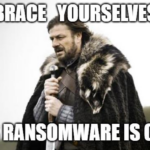No products in the cart.

Obfuscation is often easy to recognize when it is being used; but not so easy when it pretends to be part of a binary's embedded data and used to communicate secrets back and forth. Introduction This article covers a handful of fun ways to play with executable binary files instead....
Author
Latest Articles
 NewOctober 3, 2023Hunting Hackers Using Autopsy on a macOS Image
NewOctober 3, 2023Hunting Hackers Using Autopsy on a macOS Image OfficialSeptember 26, 2023Hunting for macOS Ransomware Using VirusTotal Enterprise
OfficialSeptember 26, 2023Hunting for macOS Ransomware Using VirusTotal Enterprise OfficialSeptember 10, 2023VirusTotal’s Code Insight Versus ChatGPT Analysis
OfficialSeptember 10, 2023VirusTotal’s Code Insight Versus ChatGPT Analysis New EditionSeptember 1, 2023Forensic Fun with Cryptographic DataFrames using Python
New EditionSeptember 1, 2023Forensic Fun with Cryptographic DataFrames using Python
Subscribe
Login
0 Comments